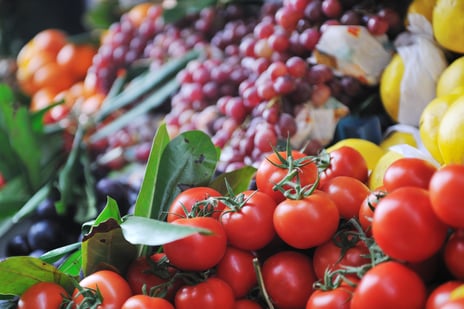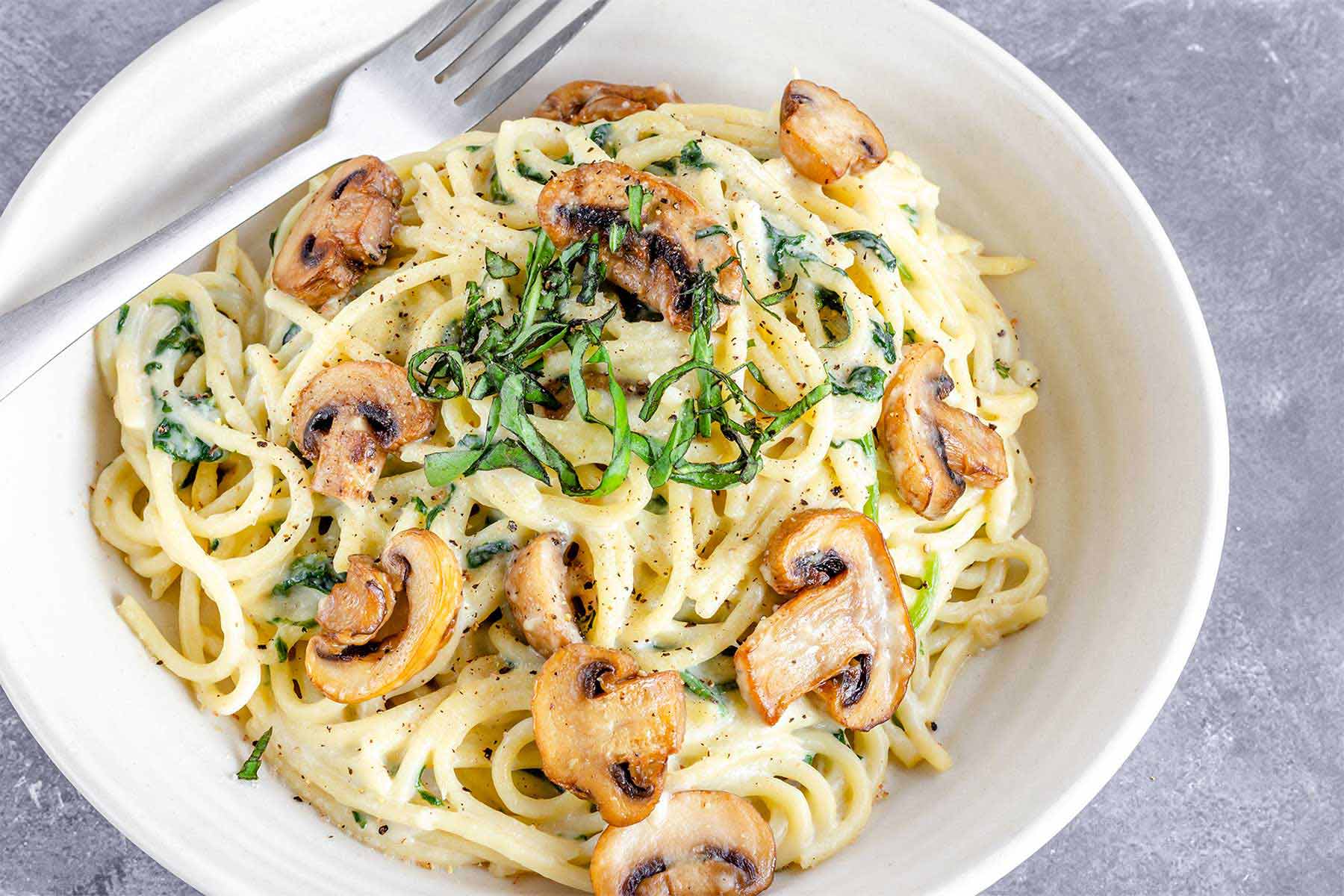It makes sense for hospitality venues to stay on top of different dietary needs and requirements so they do not lose out on potential reservations. Among other things, if they can appeal to diverse groups, they would also be able to attract a greater number of bookings.
However, the health and safety of potential customers are also vital when it comes to including special dietary requirements. While many, if not most venues, now have a range of delicious vegetarian and vegan dishes, some allergies or intolerances slip through the cracks.
To ensure your business is not one of these unlucky venues with no awareness of special dietary requirements, we have provided a list below of the most common food allergies and intolerances. By knowing the foods these dietary restrictions must avoid, and alternatives you can offer instead, your business is sure to remain successful.
What are Intolerants?
Intolerants refer to foods that, when eaten, cause adverse effects to the digestive system. When someone ingests a food intolerance, they can experience a range of symptoms that, while not life-threatening, are liable to cause pain and discomfort.
Common symptoms of food intolerances include:
-
Bloating
-
Stomach pain
-
Nausea
-
Gas/flatulence
-
Irritable Bowel Syndrome (IBS)
-
Hives and/or rashes
-
Diarrhoea
-
Mouth ulcers
-
Headaches
For most, food intolerances can only be managed through avoidance. Once an elimination diet has indicated what foods are intolerable, the next step is to cut these certain foods out of one's diet.
What are Allergens?
Allergens are substances in one's environment that may be harmless to others but cause an adverse reaction in the person who is allergic. Although common allergic reactions involve purely environmental factors like dust, mites or even pollen, many also apply to foods.
When consumed, these foods can cause an allergic reaction as the immune system is targeted and attacked. Some cases of reactions can be so severe that they are life-threatening, requiring immediate treatment once symptoms are shown.
Common symptoms of an allergic reaction include:
-
Watery eyes
-
Increased mucus in the nose and throat
-
Itching
-
Sneezing
-
Sore throat
-
Difficulty breathing
-
Hives and/or rashes
A dining establishment must cater to any food allergies that enter their establishment to prevent any reaction from occurring. This includes not only ensuring no ingredients are incorporated in the food allergy in their dish, but also carefully cleaning tools and equipment used in the meal's preparation to ensure there is no cross-contamination from other meals.
Common Special Dietary Requirements
Across Australia and New Zealand, around 2% of adults have food allergies, with 10% of infants and 4-8% of children also experiencing this medical condition. Meanwhile, it is believed that almost 25% of the Australian population has a food intolerance.
While you may be aware of more common food allergies and intolerances like lactose and gluten, there are plenty of special dietary requirements that you and your business may not be so aware of, including:
-
Religious Considerations
-
Gluten-free
-
Paleo Diet
-
FODMAP
-
Ketogenic Diet
-
Low Sugar Options
-
Food Allergies
-
Lactose Intolerance
-
Vegetarian Diet
-
Vegan Diet
-
Coffee/Alcohol Alternatives
-
Pregnancy
Religious Considerations
It is common for religious sects to have dietary restrictions, whether that is on specific holy days, the exclusion of entire food groups, or food needing to be prepared in a certain way. By having options available in your dining establishment that acknowledges and accepts religious considerations, your business can appeal more to diverse groups.
Kosher
A kosher diet is followed by those who adhere to Judaism, with foods needing to be prepared in a manner that follows their religious beliefs. For example, meat products like chicken or beef cannot be consumed with milk products. Additionally, shellfish is completely restricted.
Certain holidays like Passover may also cause changes to Jewish dietary regulations, with leavened products like bread becoming a restriction.
One of the most obvious ways to be inclusive of these restrictions is to have meat dishes available that do not use any dairy products, and are slaughtered in a manner that follows the ethics of kosher. Just this small change can ensure that those who adhere to Jewish traditions are capable of dining in your establishment.
Hinduism
Many Hindus follow a lacto-vegetarian diet, with eggs and meat being the main food groups they avoid. While some Hindus may eat meat, cow-based products are completely avoided due to their religious importance.
Therefore, it is important to not only include vegetarian options at your establishment, but allowing for ones without eggs will be inclusive to many Hindus.
Halal
For many people of the Islamic faith, meat products from cows and chickens need to be killed and prepared in a manner that follows their beliefs. The practice of halal focuses on ethical slaughtering, and having meals that recognise these dietary needs will be more exclusive to individuals who follow this faith.
Additionally, pork is barred from Islamic diets. If you cannot prepare meat-based meals by halal and the restriction of pork, then having vegetarian options can allow Muslims the chance to still eat at your establishment.
Gluten-Free
There is a high number of individuals who are allergic to, or intolerant of, gluten. For those who have difficulty digesting gluten, it can be hard to find establishments that include gluten-free products on their menu.
While some merely need to avoid major gluten-heavy food groups like pasta or bread, there are several whose gluten intolerance restricts them from consuming anything with traces of gluten in it.
What to Avoid
Having a full menu of items that include wheat or gluten, with no option for gluten-free alternatives. This includes most types of:
-
Bread
-
Pastas
-
Baked goods
-
Crackers
-
Flour tortillas
-
Beers
What to Include
While you do not need numerous gluten-free versions of menu items, having an alternative for your more popular foods and drinks can raise customer numbers. Easily obtained and common gluten-free replacement items include:
-
Gluten-free breads
-
Gluten-free soy sauce
-
Gluten-free cakes and pastries
-
Gluten-free beers
-
Gluten-free pastas
Any gluten-free option should be clearly labelled on your menu to notify those with gluten intolerance that they have options available.
Paleo Diet
A diet that avoids all processed foods instead of those likely to be eaten by our ancestors back in the Paleolithic Era, the paleo diet certainly causes interesting dietary restrictions. Their diet of only 'natural' ingredients means that it is important to have at least one or two meals on offer that do not contain any processed ingredients.
What to Avoid
The paleo diet excludes most processed foods, but also any meals that incorporate ingredients such as:
-
Legumes
-
Cereal grains
-
Grain-like seeds
-
Starchy vegetables
-
Peanuts
-
Salty foods
-
Fatty cuts of meat
-
Fruit juices
-
Sugars
The broad range of ingredients can make it difficult to determine what foods are restricted by this diet. The easiest way to provide service to people who follow the paleo diet is to be aware of all of the ingredients used in your meals. That way, if they show interest in a menu item, you can advise them on whether or not it meets their requirements.
What to Include
The paleo diet focuses on eating 'natural' foods. Therefore, as long as there are menu items that contain lean meats, fish, vegetables, eggs, fruits, nuts or seeds, people who follow this diet can eat at your establishment.
FODMAP
A diet created for those whose food sensitivities can cause gastrointestinal issues, FODMAP avoids the short-chain carbohydrates and sugar alcohols that appear in certain foods; both naturally and as an additive. Although it is commonly identified as a combination of gluten and lactose intolerance, a low FODMAP diet is a lot more severe in its restrictions, making it difficult to cater to.
Most people undergoing a FODMAP diet are aware of what they can and cannot eat. So long as you have a range of fresh food options available and an awareness of the ingredients used in your dishes, you will be capable of directing them to suitable choices.
What to Avoid
FODMAP requires the avoidance of certain carbohydrates and sugar found in foods to prevent inflammation of the digestive system. The main groups they must avoid include:
-
Dairy products
-
Beans and lentils
-
Wheat-based products
-
Some fruits like cherries, apples, peaches and pears
-
Some vegetables like onions, garlic, asparagus and artichokes
What to Include
While there are common food groups like dairy that have been cut from people's diets with FODMAP, there are still plenty of major groups you can utilise in your dishes that are safe for them. Specifically, foods like:
-
Almond milk
-
Eggs
-
Meat
-
Specific cheeses like brie, cheddar, feta and camembert
-
Fruits like oranges, grapes, blueberries, strawberries and pineapple
-
Grains like rice, quinoa and oats
-
Vegetables like tomatoes, potatoes, eggplant, zucchini and cucumber
Ketogenic Diet
A high-fat, low-carb diet, keto is commonly thought to be used solely for weight loss. However, many people must observe its special dietary restrictions for its metabolic effects and blood-sugar benefits.
What to Avoid
With its heavy restriction of carbs and sugars, the keto diet eliminates plenty of common food choices at a dining establishment, particularly:
-
Starchy vegetables
-
Grains
-
Legumes
-
Fruits
-
High-sugar junk foods and drinks
By including meals with higher fat content, especially over carbs, people who follow this diet's special dietary requirements will find it enjoyable to regularly return to your business.
What to Include
If you are looking to be inclusive towards those who follow the keto diet, then you absolutely must ensure your menu includes at least one instance of:
-
Fats like nuts, avocado, cream cheeses, seeds, butter and healthy oils
-
Low-sugar fruits, which often means moderate serves of berries
-
Heavy proteins like meat, eggs, cheese, tofu or tempeh
-
Non-starchy vegetables like leafy greens, tomatoes, onions, broccoli and cucumber
Low Sugar Options
You see 'low sugar' as an option in certain venues, like bubble-tea shops, where customers can adjust how much sugar they want to be added to their drink. This might not be possible depending on the rigidity of the dish, or the capabilities and time constraints of the kitchen, but venues might consider offering reduced sugar options to certain dishes and drinks (where possible).
This offering might encourage customers who are craving something sweet, but not too sweet, to attend the venue.
Food Allergies
Perhaps one of the most important considerations on this list, food allergies need to be carefully adhered to in any dining establishment. This means not only avoiding using ingredients that the customer is allergic to but also ensuring there is no cross-contamination from cooking utensils or equipment.
Failure to do so can cause an allergic reaction in the customer, which can be severe enough to cause them to go into anaphylactic shock in some cases. If a customer alerts you to an allergy they have, the kitchen staff must be notified right away and all precautions should be undertaken.
What to Avoid
Once you have been notified of an allergy, you must ensure no traces of it are contained within the dish. This is because, unlike most other dietary requirements, allergens can be deadly for some.
Some of the more common types you may encounter include:
-
Fish and shellfish allergies
-
Peanut allergies
-
Egg allergies
-
Soy allergies
-
Milk allergies
-
Tree nut allergies
What to Include
To help customers with these common allergies find a meal that suits them, you can include markers beside menu items that notify readers that it contains certain allergens. By having this system, you can simplify the process for customers in finding a meal that they can enjoy.
It also shows that you are aware of and care for those who have allergies. This awareness will reassure customers that you are thinking of their well-being when you make their meals, encouraging them to return.
Lactose Intolerant
Despite being one of the most common food intolerances, lactose can also be found in many popular menu items. While many can consume small amounts of lactose without showing any symptoms of discomfort, it is easier on their digestive system if they eat meals that are dairy free.
Substitutes for dairy milk products are becoming more common, so it has become far easier in today's food market to cater to lactose intolerance. Even just one dairy-free option, especially if you are running a dessert or ice cream shop, can attract more customers who may not feel included elsewhere.
What to Avoid
Lactose intolerance means being unable to eat any foods containing lactose. This rules out most dairy milk products, including cheeses, yoghurts and ice cream.
While it may be difficult for establishments like ice cream parlours to avoid lactose, there are alternatives available in lactose-free products.
What to Include
The simplest way to be inclusive towards those with lactose intolerances is to include dairy-free versions of certain menu items, or remake them with milk alternatives like almond or soy. This applies to most dairy products nowadays, with coffee shops offering milk alternatives even as restaurants and cafes offer vegan-friendly options.

Vegetarian Diet
A well-known dietary restriction, vegetarian diets do not allow for meat to be consumed. So long as there is an option or two on your menu that does not utilise meat in its inception, then many vegetarians will be interested in providing their patronage.
What to Avoid
Essentially, you must avoid only having meat-based products on offer. Many businesses fall into the bad habit of only offering entrees that are vegetarian, rather than main meals as well, which will deter most patrons.
By targeting such an increasingly popular niche, you can successfully use this strategy to stay competitive in your local market.
What to Include
While an entire meal can use just vegetables to be considered vegetarian, there are meat alternatives available that can broaden your choices:
-
Tofu
-
Pea protein
-
Seitan
-
Jackfruit
-
Tempeh
-
Black beans
-
Lentils
-
Chickpeas
-
Plant-based meats
-
Soy products
Vegan Diet
Vegan and vegetarian diets alike avoid the use of meats in their meals. However, vegans take it a step further by having no animal products. This can remove a lot of options from the menu, but by using alternatives, or relying on vegetables, you can still create vegan-friendly foods.
What to Avoid
The breadth of animal products is quite extensive when it comes to food. Beyond red or white meat from an animal, vegans can't eat meals that include:
-
Eggs
-
Cheese
-
Butter
-
Dairy milk
-
Mayonnaise
-
Honey
-
Seafood
What to Include
While foods such as vegetables, fruits, legumes, breads, pasta and rice are more than acceptable to vegans, you can also try to recreate meals with dairy-free or alternative products like:
-
Plant-based meat
-
Tofu
-
Tempeh
-
Oat, almond or soy milk
-
Soya protein
-
Coconut products
As veganism becomes more popular, incorporating vegan dishes into your menu will likely be met with positivity and a larger customer base.
Coffee/Alcohol Alternatives
There are heaps of customers who can’t, don’t want to, or are unable to drink caffeine or alcohol. The reasons behind this can vary from personal preferences to health and lifestyle reasons. For these customers (depending on the venue), it may be difficult to find an appealing alternative.
The alternative to coffee or alcohol does not have to be decaf or zero-alcohol products. It might simply be a range of soft drinks, juices, smoothies, teas and so on that entice customers who don’t drink alcohol or coffee which, in turn, can provide an extra revenue stream for venue operators.
Pregnancy
Catering to the needs of people who are pregnant can be an effective way of ensuring that the venue is inclusive, and appeals to a wider range of clientele. It might not be a different range of dishes, but the NSW Food Authority emphasises that many foods can be highly risky for pregnant people to consume.
What to Avoid
Soft cheeses, sushi and alcohol are usually not recommended during pregnancy, along with:
-
Raw meat and fish
-
Processed meats unless thoroughly cooked
-
Cold chicken or turkey
-
Soft serve or fried ice cream
-
Unpasteurised dairy products
-
Raw egg
-
Rock melon
-
Bean sprouts
-
Products made with tahini
There are plenty of food products that pregnant people have to avoid, but most are aware of their special dietary requirements. Providing alternatives or the flexibility to make changes to certain meals can allow them to feel comfortable in your venue.
What to Include
To help assure your pregnant customers that their dietary needs are being met, all meat products should be cooked the whole way through. While there are often plenty of meals that do not incorporate ingredients that are harmful to pregnant people, always relay the customer's needs to the chefs to ensure that there is no chance of making a mistake.
Catering to dietary requirements is important for hospitality venues. It can broaden the venue’s offering, and encourage more customers through the door. Part of this process is making a concerted effort to know what’s in each dish, and being aware of the capacity of the kitchen to make changes. And, if the venue can facilitate a range of dietary requirements, it should consider a promotion to let customers know.
Disclaimer: This guide is general in nature and does not take into account your individual circumstances. Before acting on any information, you should consider whether this is right for your business.
Ask our team how we can help you manage dietary requirements at your venue. From setting up booking widgets to applying close-out times, we'll help keep you in full swing.






